Presentation by Aldo Mayoralgo, Andy Locsin, and LVLP
Edited by Judith A. Torres
Editor’s Note: The second speaker on Day 1 of B+Abble 2021 is Leandro Y. Locsin, Jr. , administrator and design consultant to Leandro V. Locsin Partners.
LVLP is the current incarnation of an unbroken architectural practice founded in 1955 by Leandro V. Locsin (†), Philippine National Artist for Architecture. The firm is credited with having produced many of the country’s most distinguished works of modern architecture. Since 1955, the firm has designed over 33 public buildings, 75 commercial buildings, 6 hotels, 13 churches, several country clubs and museums, and more than 100 residences.
Andy Locsin joined the firm in 1990 and has been responsible for helping the Partners establish its governance policy. He serves as an internal critic and design consultant on the firm’s defining projects and as presenter for the firm’s complex and important work. He is often at the forefront of the firm’s joint design efforts with allied collaborators, design partners, and consultants. He earned a Master of Architecture from Harvard University Graduate School of Design in Cambridge, Massachusetts (1989), after completing the double major of Architecture and Eastern Art History from Wesleyan University in Middletown, Connecticut (1984).B+abble is a series of talks on architecture in design initiated by Filipino firm, Buensalido+Architects. B+abble 2021 was held via teleconference on October 22 and 23.
Hi, folks. Good afternoon to everyone. This presentation is called The Big Idea. It speaks to the firm’s design approach over time. We are a second-generation firm, so this dovetails very nicely with B+abble’s theme this year, Continuum. We are the third iteration of a firm that my father started before 1955 as a single architect. Eventually, he organized his firm into Locsin Associates and then, Leandro V. Locsin and Partners. Us being the third iteration, we dropped the “and” because the people in the firm, the principals, are essentially his partners. So, we are Leandro V. Locsin Partners.
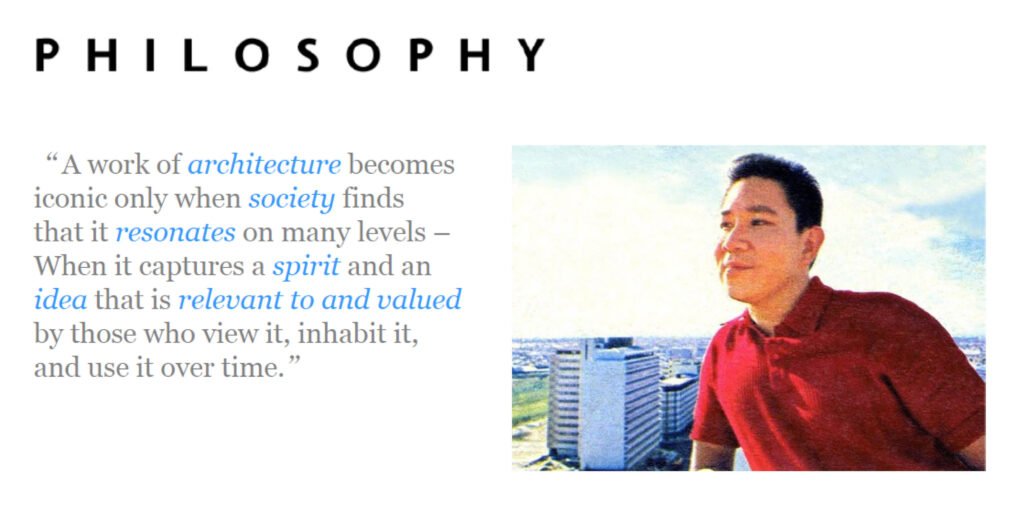

We start here. This was always true to form with my dad when he started the practice. He felt that architecture was meaningful and had the potential to be iconic, only if it resonates on many levels, as with great art. It had to have something that captures the spirit, and an idea that continues to be relevant over time to the people who see it and use it. That’s how something remains relevant. Once that’s lost, then the architecture itself is somehow lost to society as well.


As many of you know, he’s best known for buildings like the CCP, the Cultural Center of the Philippines, which has remained in use over time.


And society, our country, chose to recognize him as a National Artist.
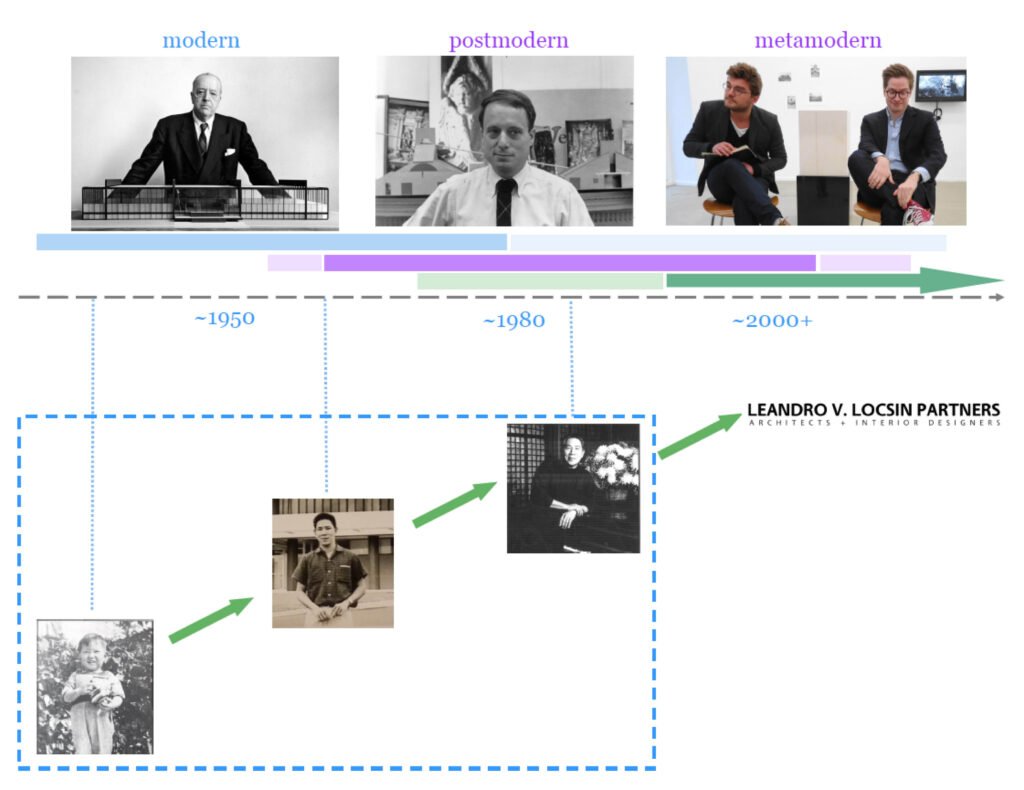

So, this is a story of how he developed his practice and the legacy we inherited. The timeline spans from his early years, pre-1950, all the way to 2000.



When we say “the big idea,” it’s evident to many observers familiar with his work that there was something entirely unapologetic to his architecture. The diagrams were extremely clear. The building itself was expressionistic about the way it was built and about the big, original idea.
This is an initial model of what later became the University of the Philippines chapel. You see that big idea of something in the round carried through from the drawing to what became this building.


This is a picture from years ago, before the chapel had been overgrown by trees. The diagram was clear, the parti was clear, and the execution in the end followed through. And that form continued to endure.


Like so many of you young guys, his career began with work that was commissioned. Here he is in talks and interactions with the academe, with symposia such as this. Look at that blackboard in the back. We’re still talking about the same things as they were in the 50s and 60s—the issues of technology, aesthetics, communication, social responsibility and responses, and philosophy.
His architectural dialogue has been consistent over time, and he had a robust, collegial interaction with his contemporaries, with the architects of the day, which we are seeing again in venues like B+abble.
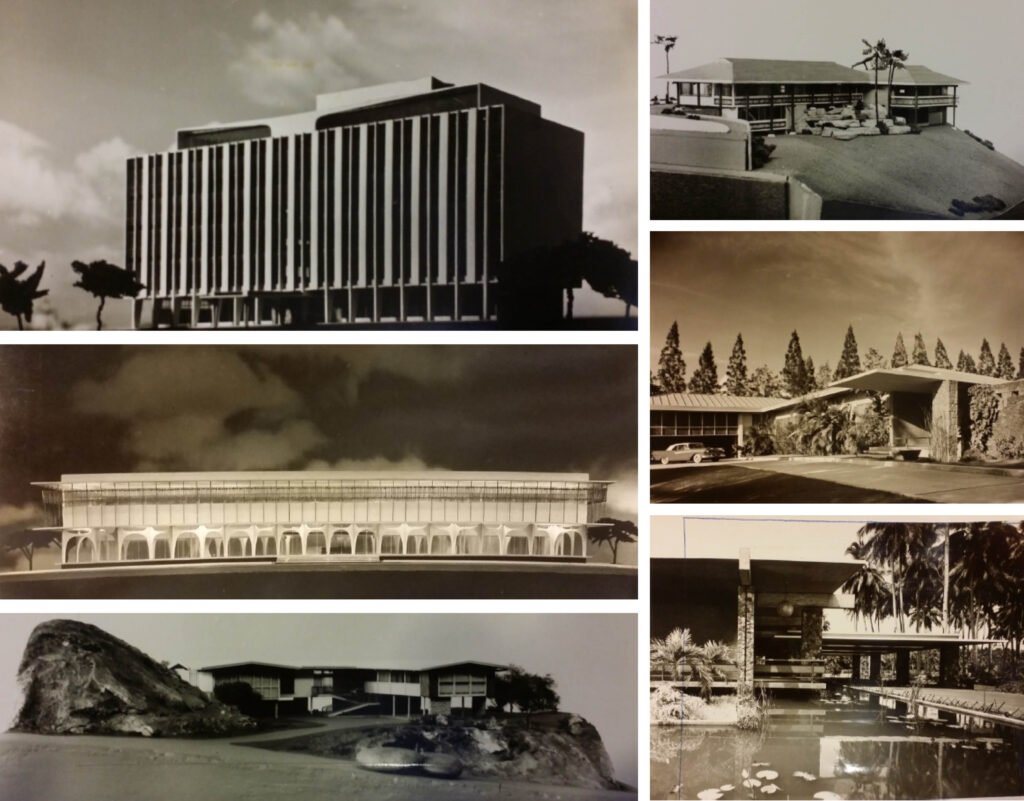

The schemes that came out of that early office, you can see a very, very strong design sense—concepts of floating volumes, openness, a horizontality that was of the earth, and a lifting of those volumes off the ground; reminiscent to some degree of an abstraction of what Filipino architecture could be. In the firm’s residential work and hotel work, like the shot on the bottom right of the Davao Insular Hotel, you see this openness, this questioning of what’s outside and what’s inside—a powerful sense of that approach to modern architecture.


And in his later years at the office—some of you might recognize drafting tables. Yes, they did exist! If you can see my pointer hovering over this person, one of the characters that came through the office is Ana Castillo, who heads the architectural group of Century Properties these days. She was a partner at the firm and then moved off to Century. This fellow over here (in white shirt, left) was my dad’s oldest senior partner, Ruben Protacio, who ran the firm after my dad died. This fellow is an interesting fellow named Alex Zaballero (with glasses next to Protacio), who is now one of the managing partners at a firm called TPG in New York, an award-winning firm.


So many people have come through the office and have done the office proud and themselves proud. The result, of course, is these buildings—very, very strong, informed, recognizable, some might say iconic, and, to some degree, familiar. One possibly unfamiliar building on the upper left is the Palace of the Sultan of Brunei, done in the early 80s. That’s not in the Philippines. And the building directly below it is the Expo 70 pavilion in Osaka, Japan.





And over the years, there have been people who have come around, like Caryn Paredes Santillan, who have begun to take apart the architecture and study the design precepts of my dad’s firm. Some of you may have seen these drawings—the idea of the floating volume, the references, basically, to the bahay kubo or Asian houses, lifting the volume off the ground. Then these ideas of compression, squeezing compression in elevation and in section were familiar concepts in many of his buildings.
I’ll just fly through these, but they’re essentially diagrams of the concepts, the partis, the big ideas, of these individual buildings. Very, very clear diagrams and something that, actually, we reinforce in the firm’s work today. The floating effect, the grounded plane, the grounded flight, these large concepts that were characteristic of the work of that previous iteration of the firm.


The question is, of course, it’s an issue of taking a jumble of variables, reading a program correctly, looking at the project’s ambitions, distilling it into a big idea—again, the firm’s theme—and then giving meat to that, iterating, and coming up with a form that works on so many levels. And operates in a way that people can read the building in so many different ways, and different layers of meaning.
Some see a sailboat, some see a vinta, some see praying hands, some see a bird about to take flight, some see a conquistador’s helmet. And it’s that complexity that makes for very, very interesting architecture. This building, the Philippine pavilion in the 1970 Expo in Osaka, Japan, no longer exists. But somehow, people still refer to it as one of the more definitive works of the firm.
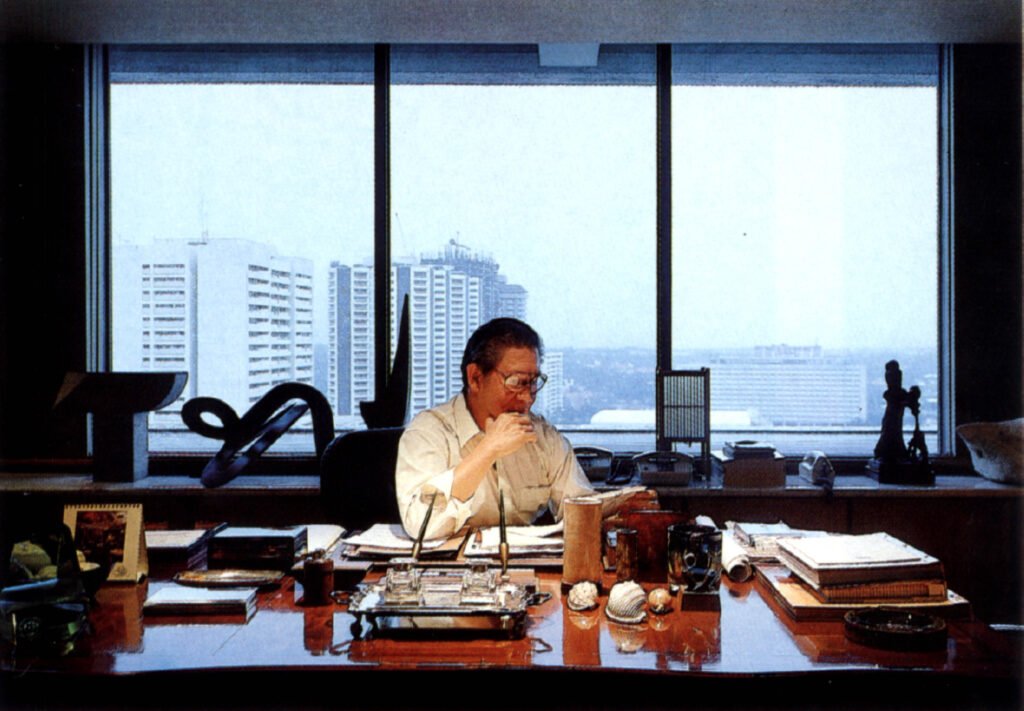

This is a picture of him in the early 90s at the office. Some of you will recognize the Tuscany building in the back, on the left. And you see in the long shot, the Intercon. The Shangri-La does not yet exist.
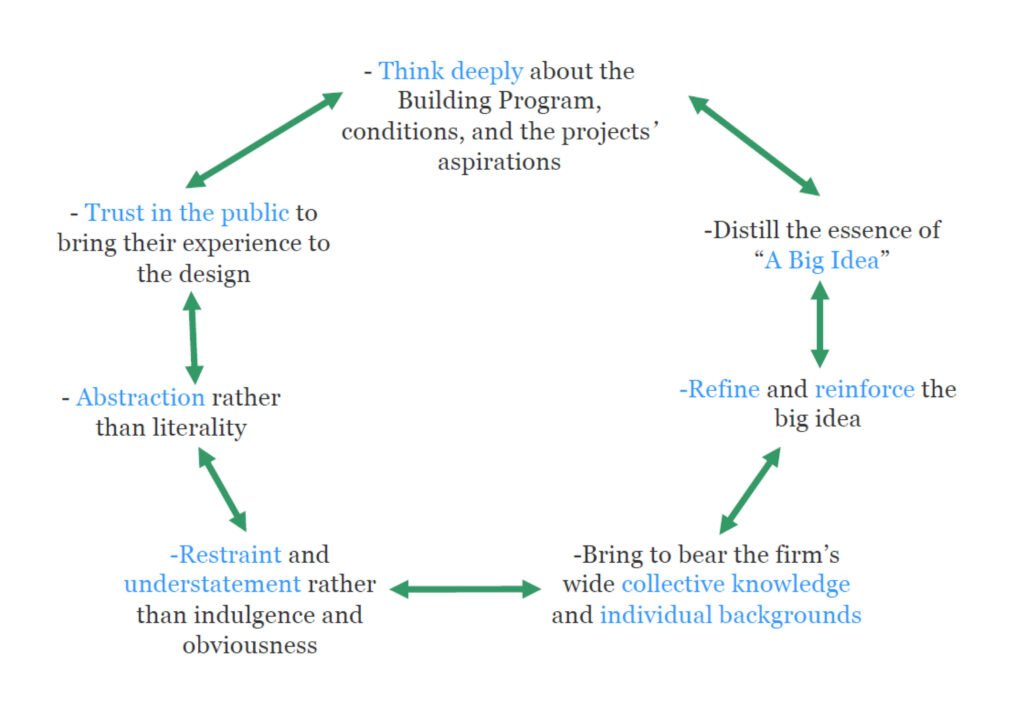

I offer this diagram to explain how the office thought about the design process during the time of my dad and his colleagues. And it all begins with the first, at the top—thinking deeply about the building program, the conditions, the forces that act on the site, and the project’s aspirations. When I say the project’s aspirations, I don’t mean only the client, but what does the building try to do? What is it trying to say?
Distilling that into a big idea, refining and reinforcing that idea, bringing to bear all the firm’s vast knowledge—in my dad’s case, his and his design partners’ individual backgrounds—on that big idea, looking to restrain oneself and not going overboard. And this is where the idea of timeless architecture comes in: avoid the obvious, avoid over-indulgence. Instead, abstract the meaning of the essence of the form, so that it acquires many, many layers of meaning.
And then, in the end, trust the public or the user to bring their own experience, rather than the architect’s idea being forced on everybody else. So, it’s about trusting the general public to get themselves into the essence of the building.
And that’s, in effect, what makes a building resonate. And then you do it all over again. You do this at almost every stage, from the schematic design development to the details of the building.
So, the question is, in this continuum, what of that stuff has been leftover and passed on? Our argument is that these ideas and that approach to architecture live with the changing times. And I’ll start off with a set of drawings to show that.
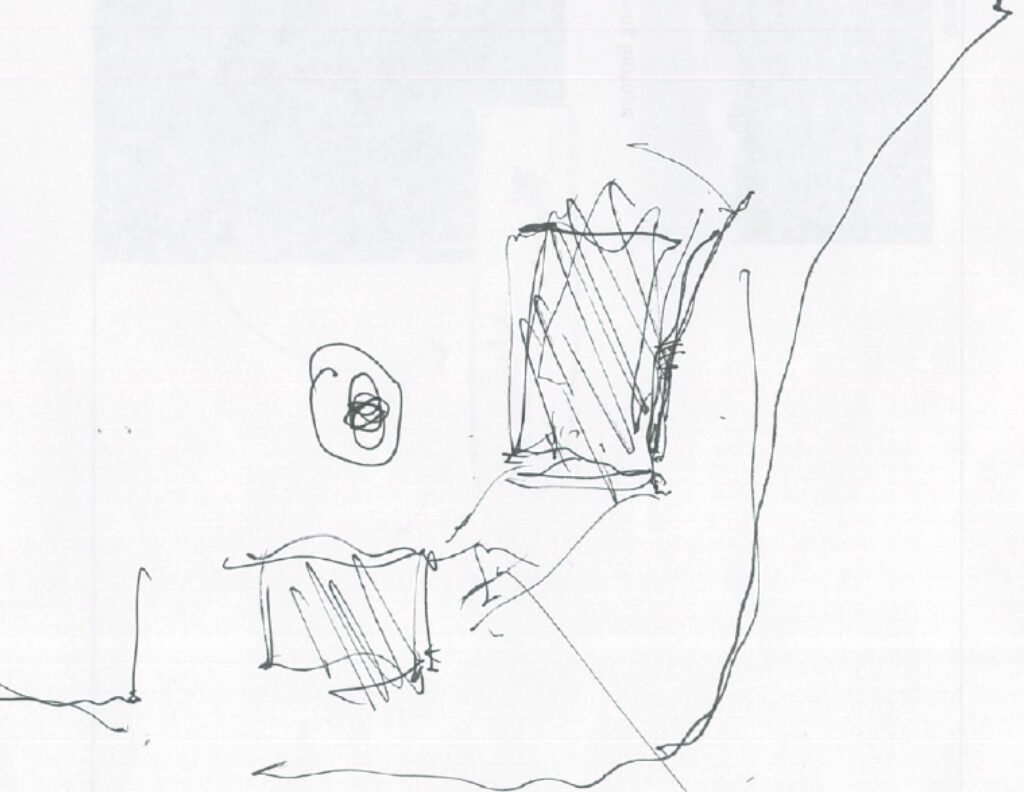

Ayala Museum
This is the very first diagram of the Ayala Museum—it looks like chicken scratch. But it’s a plan. If you look at the horizontal line at the bottom, that’s Makati Avenue. And then the curved area to the right is De la Rosa Street. How that diagram came about was essentially a function of the TOR of the museum—the requirements of the museum—and talking about its ambitions and the site conditions that work on it.
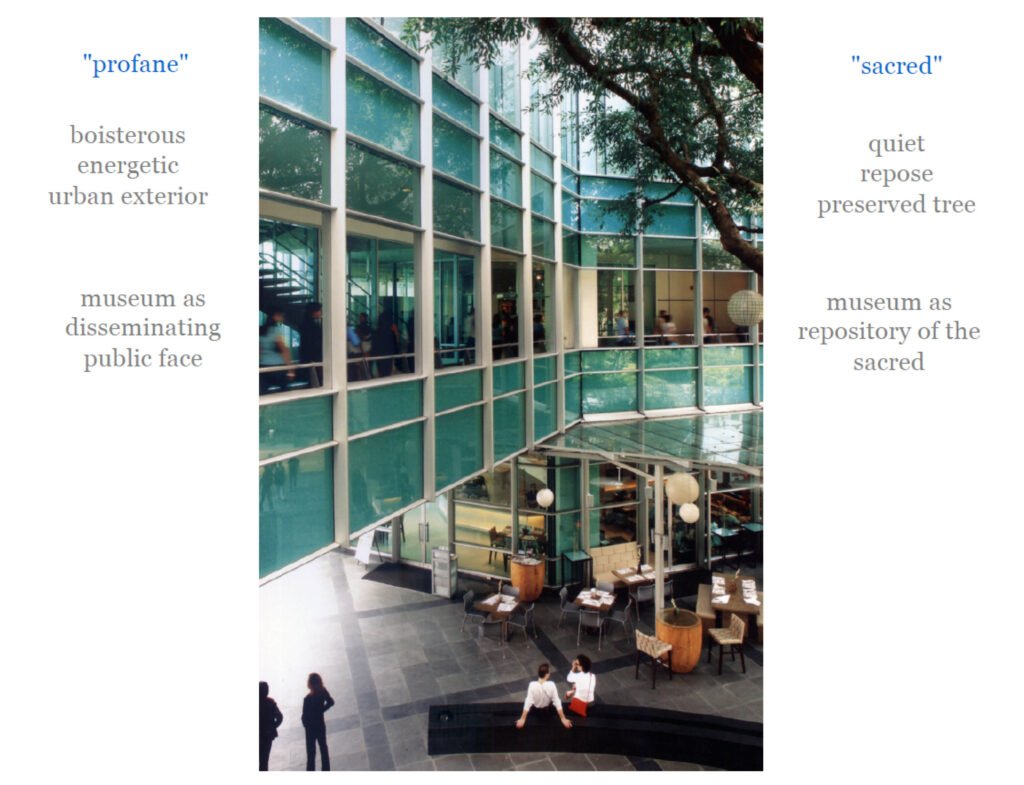

And we had this as its basic set of programs. There was one side which we call “the profane,” which was right on the street side, the public face of the museum. Then, the other side of the program, because of that corner condition bordered on the Greenbelt Park where there was this amazing tree, we thought of as the “sacred area.” So, one side was boisterous, an energetic urban exterior; the other was this quiet, contemplative side.
Part of the museum’s program was reaching out to the public. And yet it also had to be a protective repository for the museum’s objects and iconography.
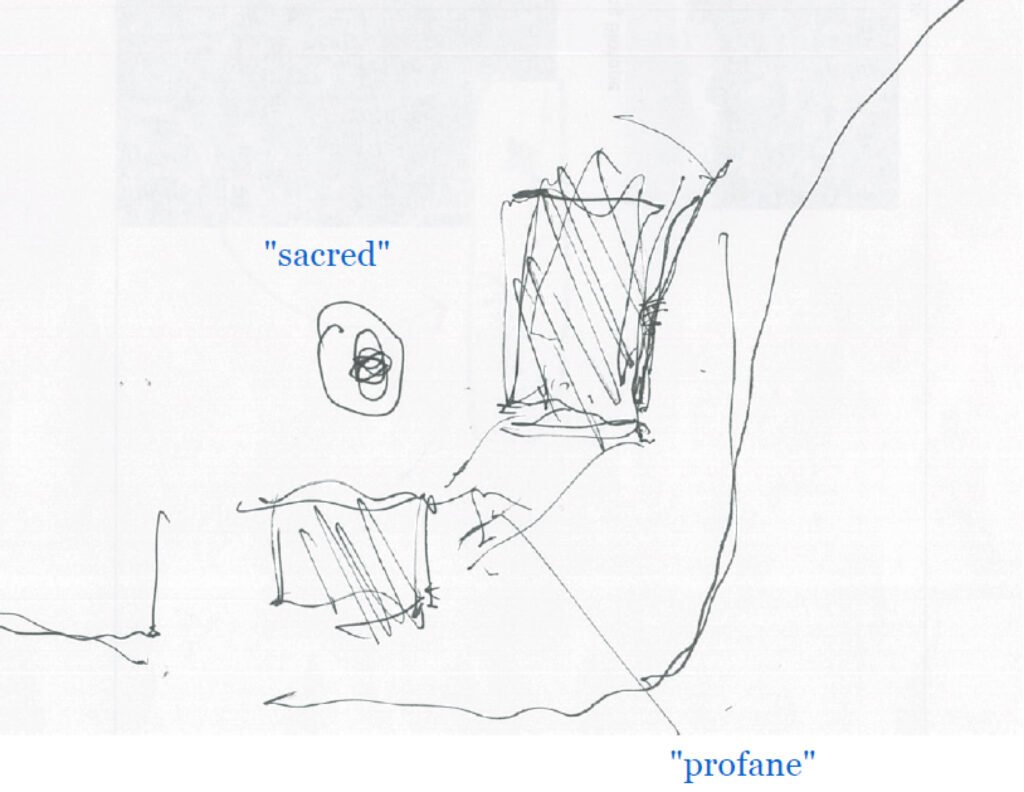

And so, you see here the development of this diagram: You had the sacred side, which is where the tree is, and the profane at the street corner.


In between is a visual connection between the profane and the sacred, the transition from one to the other.


When you look at the forces working on the site, the angle of De La Rosa Street, that curve, we applied that to the façade of the volume of one part of the program, taking that same curve, applying it to the second element, but in elevation, in 3D.


One part of the program, this protective part where the objects would sit, was a solid piece. These dualities of the museum program and ambition. And then the other side, a glass tower that was a more public face, projecting openness, transparency. This is where the classrooms in the museum were. There is always this connection to the tree from the sacred to profane and the mediating structure that ties the two parts of the museum together.
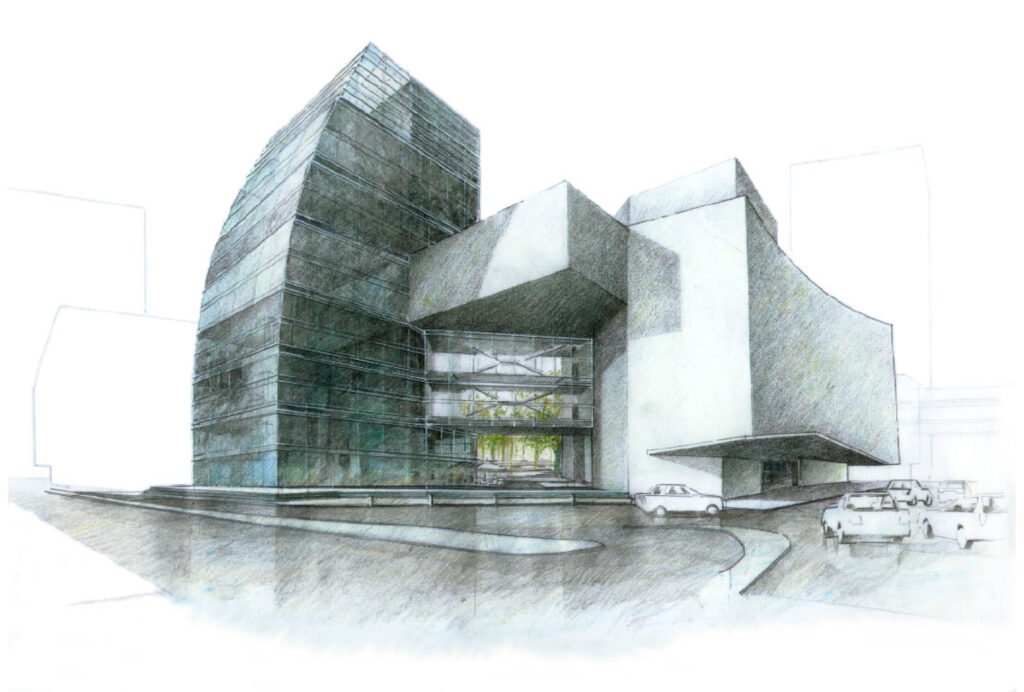

And this was the initial sketch of what that museum might feel like. So, you have the glass tower on the left, the solid piece on the right, this interlocking piece in the middle that became the transition point, joining profane to sacred. And then this interlocking piece in the middle, this bridgeway composed of two parts, one transparent, one solid.


And here’s what got built after several iterations. This is the Ayala Museum most of you know. Now, it was unforeseen that the museum would grow in such a huge way that they had to find a way to reclaim space. In the footprint of the museum, there was no opportunity to build upward.


So this is what you’ll see. Some of you have been out in this pandemic. There’s restorative work, renovation to the museum, and this is what it’s going to end up looking like. We’ve created a new crossing space. That large glass façade that’s very transparent still becomes a mediating space between the tree and the sacred space beyond and the profane.
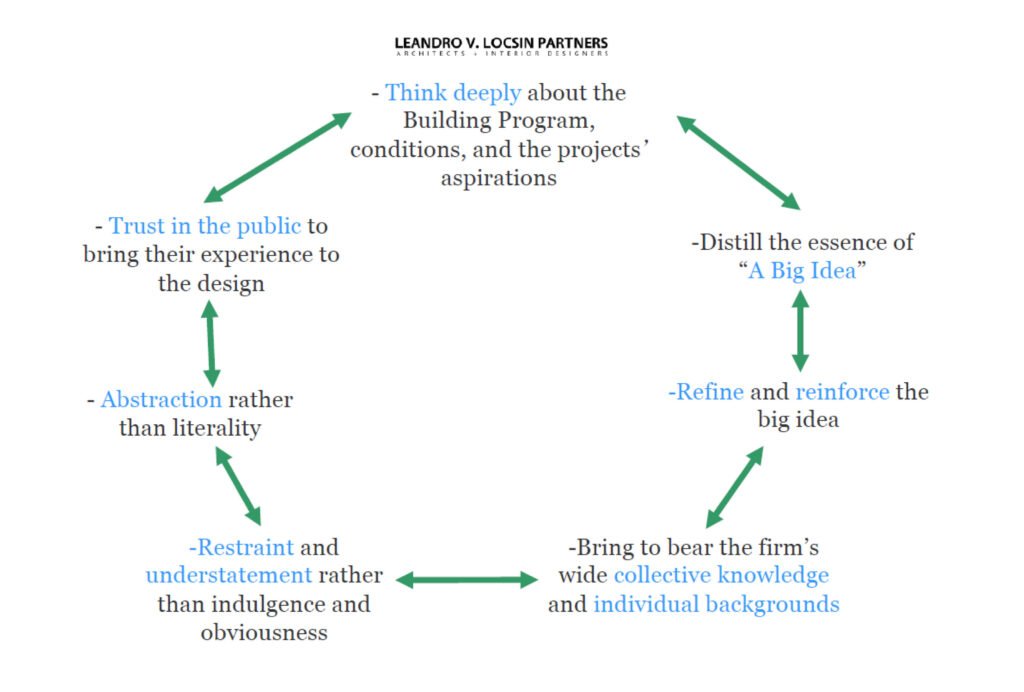

So again, it all begins with thinking deeply about the building program in this seven-step process. It’s not actually very prescriptive because some of this happens in a very natural, organic way. But if you were to diagram the thought processes—the design process—it looks like that.
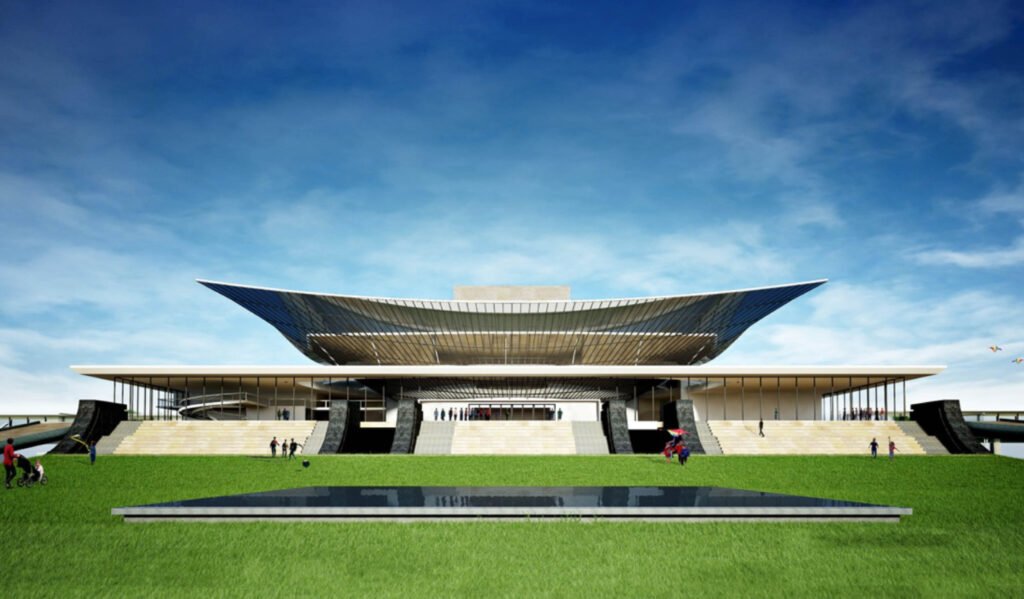

CCP Redevelopment
Further to that, bridging generations, here are two projects that had to do with a competition some 10 years ago for the redevelopment and addition to the CCP complex. The program called for a new Artist’s Center and a new, smaller theater while they rehab the old CCP.


How did the bridging happen between these two projects? People have talked about the design of the CCP as this volume floating up off the ground. The architects, Raul and Ed, who had worked on the CCP in the 60s, explained this idea of the Filipino house—an abstracted volume floating off the ground. And this idea of reclaimed land with water and a kind of wave action working on the bottom part.
We think it resonates with some people because it’s a very familiar landscape, like the image on the right of a rock that’s been worn over the years by the water’s action.


Diagrams of the CCP—the flow of the volume, the lifting off of the ground, and that wave action, this resonating thing.


And it means many things to people. People see this as a wave, as worn rock, or just a fantastic cantilever.
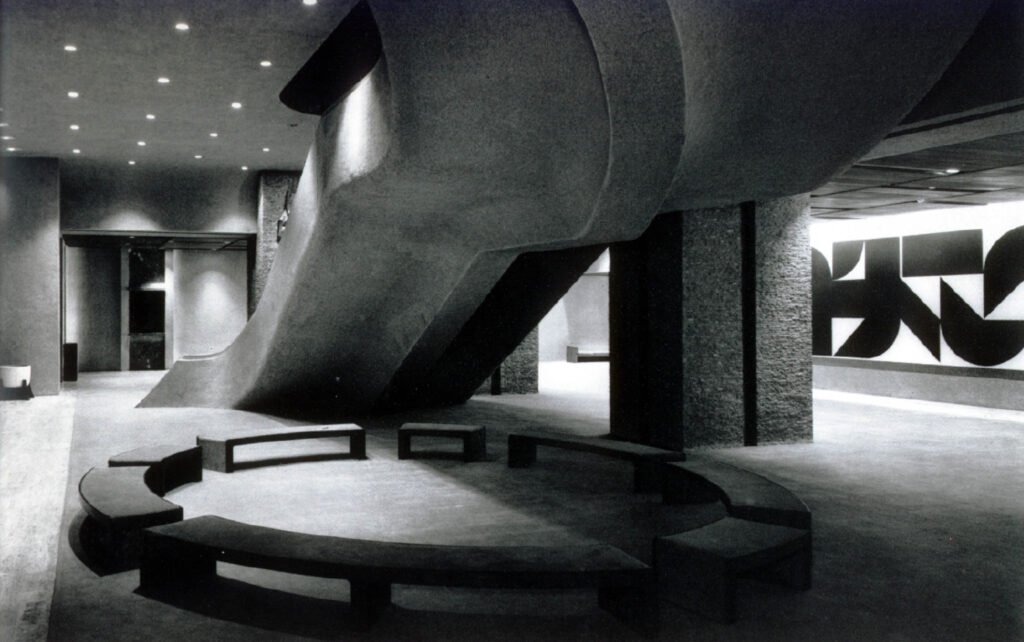

Looking at the inside, you get the sense that it was sculpted and worked on and worn away by time. The stair, the lobby, and culminating in this cavern-like theater where you get the feeling that at one point it was solid, but somehow, was worn away and carved away.


And so, this was the project. The CCP is the building in the front in white on the right. And then these two lots to contain the Artists’ Center in the middle, and then a new theater to the left.
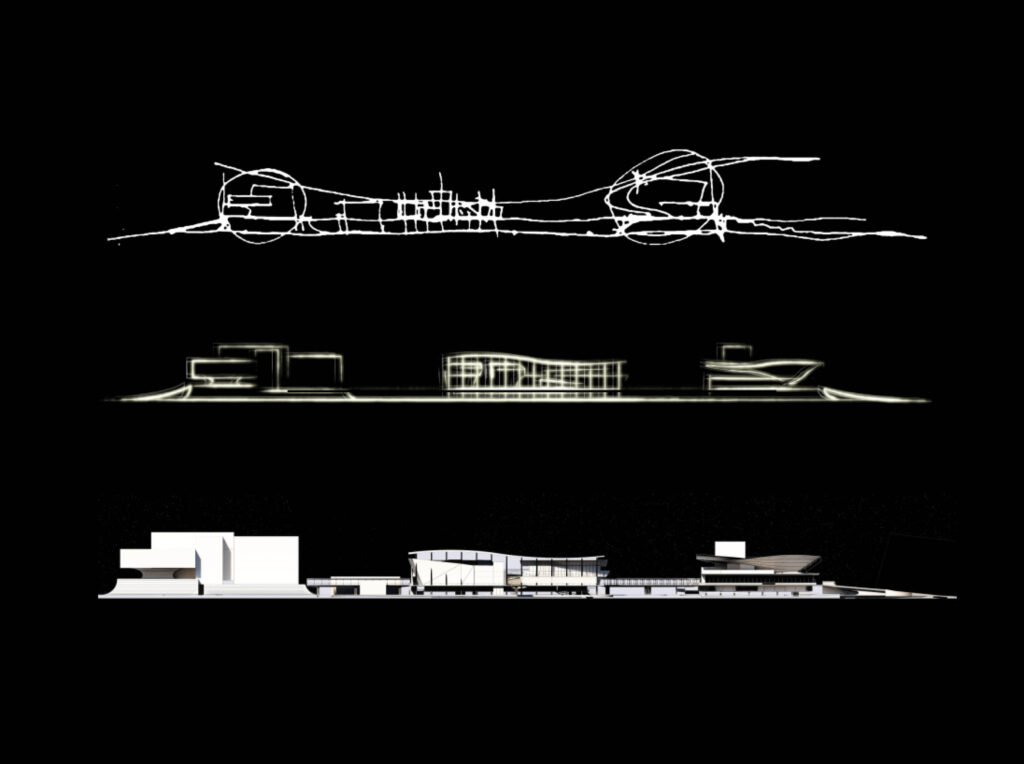

We looked at the diagram as a bookending exercise, with the existing CCP building on the left, a lower structure in the middle, and then bookended by another theater on the right, facing the ocean.


Inspirationally, we went back to this idea. The original idea of this worn rock volume lifted off the ground. We introduced the idea of mangroves, you know, you look at the sea conditions and how it’s worn. The issue of climate change, making the building ready and open, a much lighter structure, and then, the idea of islands—these three pieces, notwithstanding that they’re separate buildings, are somehow interconnected by the stitching, the quality of the ocean, or the water.


And this was the presentation for the final scheme. You see the CCP on the left, the rear-facing Roxas Boulevard, the Artists’ Center in the middle, and then the new theater on the right.
We’re hoping that one day this thing gets built. They’ve started on some pieces of these two structures already. That’s the Artists’ Center. You can see the thing sort of lifting off the ground. Climate-ready, if there is a flood or a tidal pull or storm, it would be a safe building. The generally open quality of the spaces lifted off the ground, the connecting pieces, the old CCP, and the new theater.


This is the initial diagram of the theater, this basic idea of this light mass on the top, somehow reflecting the bottom, is also lifted off the ground. This is the original scheme that was picked. It’s actually Sudar Khadka’s diagram. Many of you know Sudar, who did the Philippine pavilion at the latest Biennale in Venice.





And you can see how we worked on it, twisted it around with the technology of computers, remodeled it. And some of those qualities are still captured; you see some of the wave action, the hollowing out of the base, very familiar to those well-acquainted with Philippine shores, and the final design entry to that new theater. Again, the inside hollowed out, some kind of force removed from it, and, finally, the overall face of the building.
So, I’m trying to say that there are shared values and similar thinking about a big idea going through from LVLP’s previous iteration to the next, from one generation to the next.
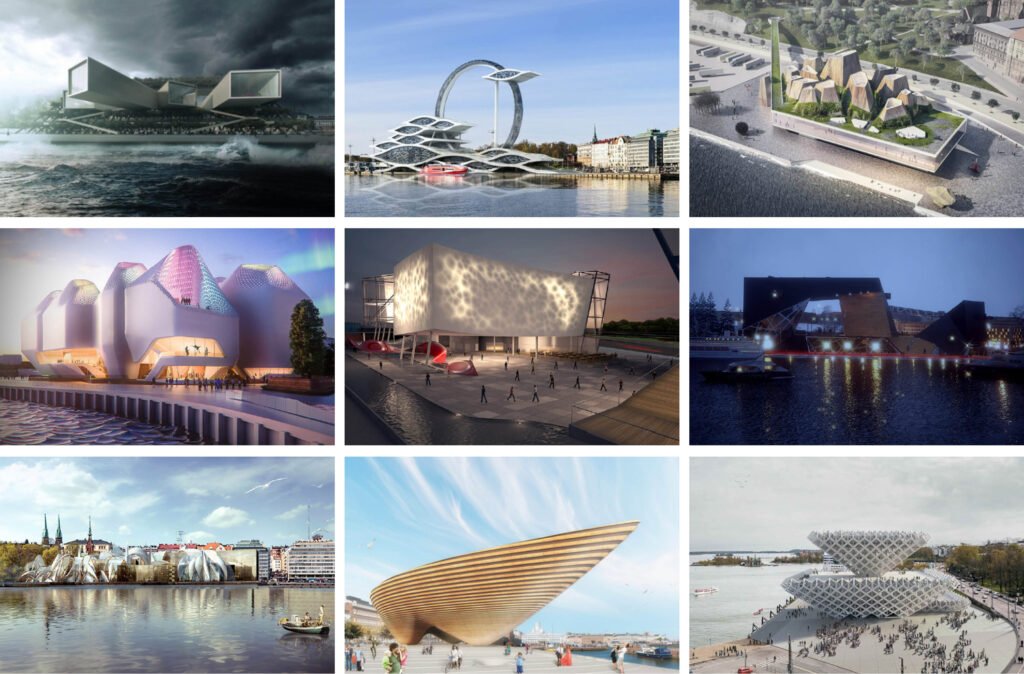

Guggenheim Helsinki
Here are a few projects of this generation. Some of you might have joined this competition—a thousand seven hundred entries for the Guggenheim Museum in Helsinki! We, of course, did not win. But some exciting things happened. We expected there would be these fabulous schemes done with all the technology available today. Fantastic computer renderings, technology-based schemes, and presentations.


And we wondered… we said, “Okay, we could do that. But, on the other hand, do we become another peanut in a bag of nuts? Or do we do something really kind of weird and go back to roots about ideas? As opposed to sexy images. And that was the attitude we took. The firm operates with a lot of humor. We have a lot of fun in the firm; we joke around a lot; notwithstanding how serious we are about the work. People say that it’s a fun place to work because we try not to take ourselves too seriously.


And so, we turned to the old approach of sketching the idea, the power of a sketch to get an idea across—totally old school. Let’s not be trapped by technology, we said. Let’s think about the idea, which is very much of the old school. And we went back to these tools you guys are all familiar with—models and sketching pens. And we had an esquisse within the firm, there were something like seven or eight entries in a three-day charette. We chose a couple of schemes. The final scheme was a marriage of two schemes.
There’s JP Dela Cruz, these are the two partners, my dad’s partners, Raul Locsin and Ed Ledesma, the managing partner, and the staff talking about what’s going on with that site in Helsinki. The second fellow on the left is Aldo Mayoralgo, who does these presentations with me. We had a lot of animated discussions on how to approach this design problem.



And we ended up with four boards that were completely hand-drawn and pieced together. And these are some of the drawings: a straightforward idea of section and attitude towards the site; a scheme that confuses what’s outside what’s inside, what is landscape, what’s architecture; an almost Corbusian plan—you can see in the upper right hand, a rather complex sequences of spaces; and a section of how how to actually construct this building, climate-ready, live roof on top, a double-loaded section in the middle.


Here are the four boards. You see JP Dela Cruz on the left and Sudar Khadka on the right. This is right before we shipped those boards off to Helsinki. We didn’t win, but we ended up on ArchDaily as one of the 32 discarded—I like the word “discarded!” We were rejected, but they thought that this was a scheme people had to know about. And it all was based on this simplicity, a big idea that was powerful, as opposed to a pretty picture.
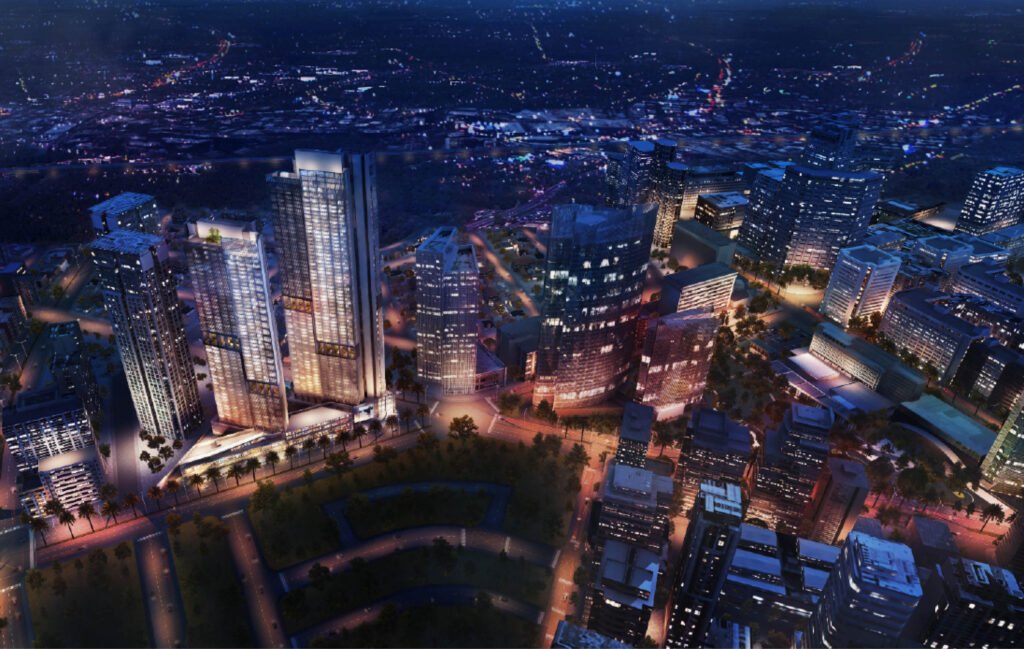



Tower Two, Mandarin Hotel, and Park Central Towers
Second project. Something you guys might be familiar with that you’ve seen over a couple of years, these projects going up. This is a bird’s eye rendering of the Ayala Triangle. And the old Mandarin site. The Ayala Triangle is on the right. Two new buildings are going up there. One will be launched this year; we’re finishing it up. And then a set of buildings on the left, on the old site of the Mandarin Hotel. Four very tall buildings on sites facing each other. And these projects morphed into something where we began working with overseas consultants to do projects here at a scale and with ambitions that were really quite high.
We see these collaborations with foreign consultants not as a rubber-stamping issue but as an opportunity to learn technology approaches from people who have done this many times in the past, so we become richer as designers. But, at the same time, we pass on information of what it takes to execute a building in the Philippines to a much higher standard than is usual. So, they learn something from us. And our demand is always to co-design, as opposed to simply carrying out an existing design. So, it’s very, very collaborative.
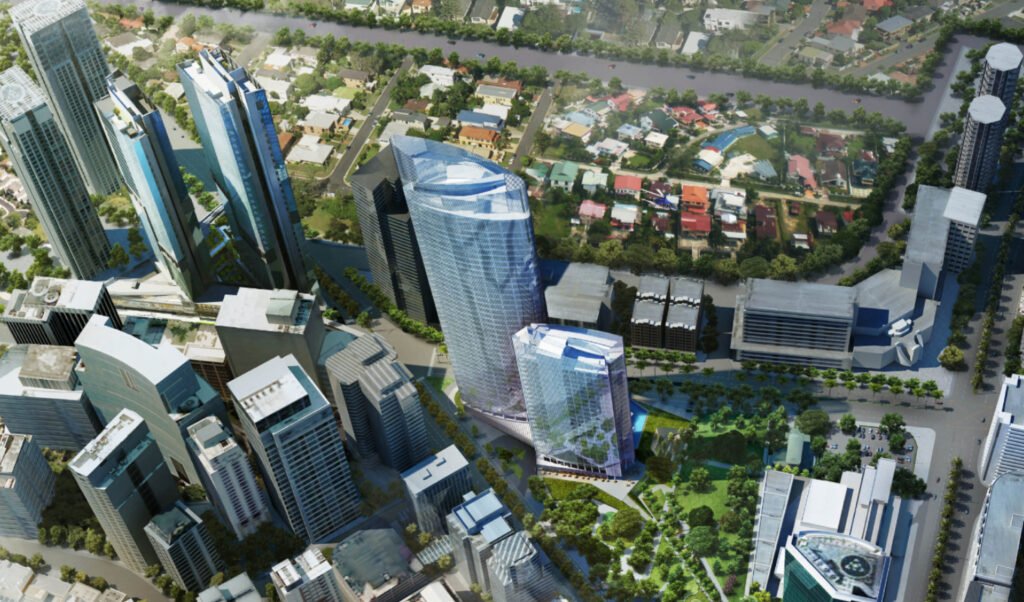

These are the two projects, the Ayala Triangle on the bottom. The tall building in the middle is called Tower Two. And then the shorter building is the new Mandarin Hotel that will open in a few years. And then, the two buildings to the left are the Park Central Towers. One is a 72-storey building, the other one, a 62-storey tower. So, the scale of these buildings is tremendous. They’re huge.


Tower Two and the Mandarin Hotel on the left, and then the Park Central Towers on the right…
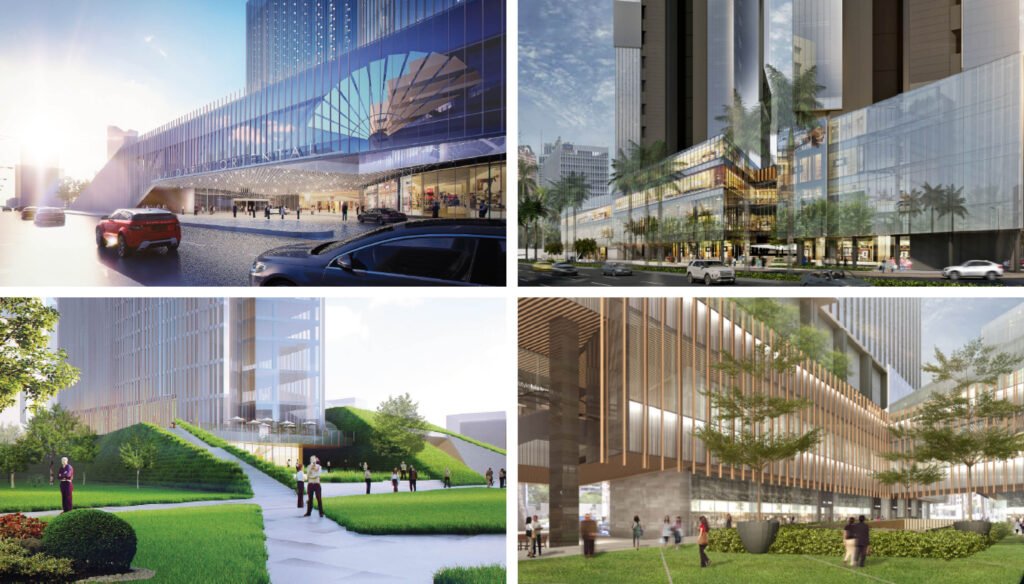

…and how they’re going to end up looking like. Tower Two and Ayala Triangle become an extension of the park at the base. And then there’s greenery built into Park Central Towers on the right.


Doing buildings like this takes incredible collaboration and an open attitude to get the best possible results. On the left, you see the Tower Two Ayala Triangle team. Those are the guys from Skidmore, Owings, and Merrill out of Chicago. They came here, worked here; we went over there, worked there. It’s been back and forth.
On the right side is the team of Soo Chan from SCDA Architects in Singapore. There was a particular apartment type that we were looking at that’s never been done in the Philippines. And so, Ayala tapped Soo Chan and asked to put this project together. These projects take an incredible amount of coordination between extended teams of people. Can’t be done by one.
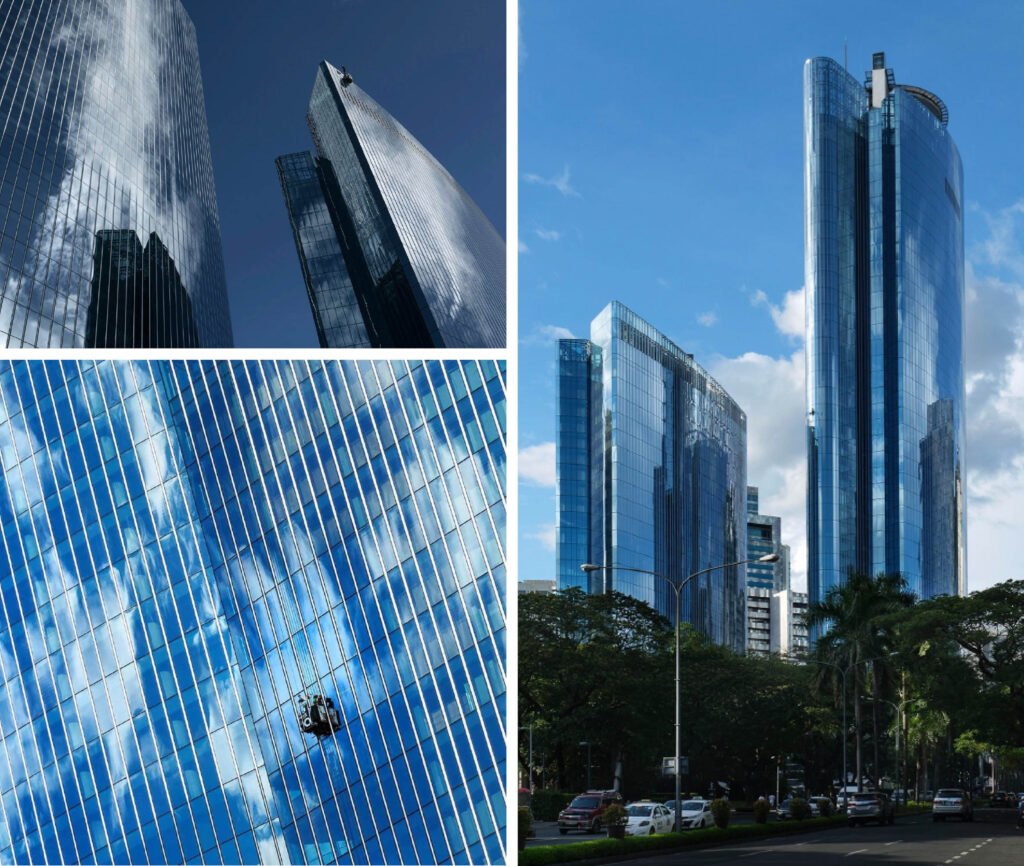

The results, what Tower Two and Ayala Triangle are looking like today. And then Park Central going up rather quickly.
And so, the question again, of relevance, of meaning. We pose the question: “Is meaning only found in big projects?” And the answer, of course, is it’s not.


McMicking Memorial
We point to this tiny little project where the arrow is pointing down to the right. This tiny thing on Ayala Triangle has to do with memorializing one of the founders of Makati City, part of the Ayala family, Mr. and Mrs. McMicking. Basically, Mr. McMicking was entirely responsible for the approach and planning of Makati. What you see today is a result of those initial ideas.




This is Tower One and the old Philippine Stock Exchange, which we did with Skidmore in the early 90s. This was the site where this memorial would happen. And just as an overall plan of the Triangle as it exists today, you see the preservation basically the central section of the park. Tower One is down to the bottom left. The Plaza next to it is the Stock Exchange over here. Here’s the old Makati Stock Exchange done by my father in the late 60s, the Nielsen Tower or Blackbird, and the two new buildings at the tip.
It’s a relatively large property. But what are we really talking about here? It’s actually this little, tiny piece that is the site. And zooming in, it’s that little object, the tiny little object in the middle of the park. And we put the scheme together that tied together what happens underneath the plaza to the memorial piece.


The big idea was to create a portal. The arch is already a portal, it functions as a portal and what we wanted to do was put a counterpoint down in the park that is a portal in and of itself, looking not only to Makati’s past and how it was established but also into the future, into the environment, and into the green.
Big idea, very simple scheme. It’s like a double portal, basically. You see the overriding proportioning system; basically, the golden ratio creates the portal’s proportion.


What it might look. The intention that people should be able to wade into that little pool of water without any issues, very friendly. And what it ended up looking like, it’s basically a doorway of some sort, an illuminated doorway made of Corten steel, with a water feature.
And at the end of the day, you had very, very happy family, remembering their past in a very modest way, hindi mabonga, it’s not chest-beating. You don’t even have to tell the story of what it is. The object exists in and of itself and can be read on many levels. Same principles, basically. And what we’re saying is a small project can be tremendously rich in meaning and can be just as satisfying and fulfilling as a very large one.
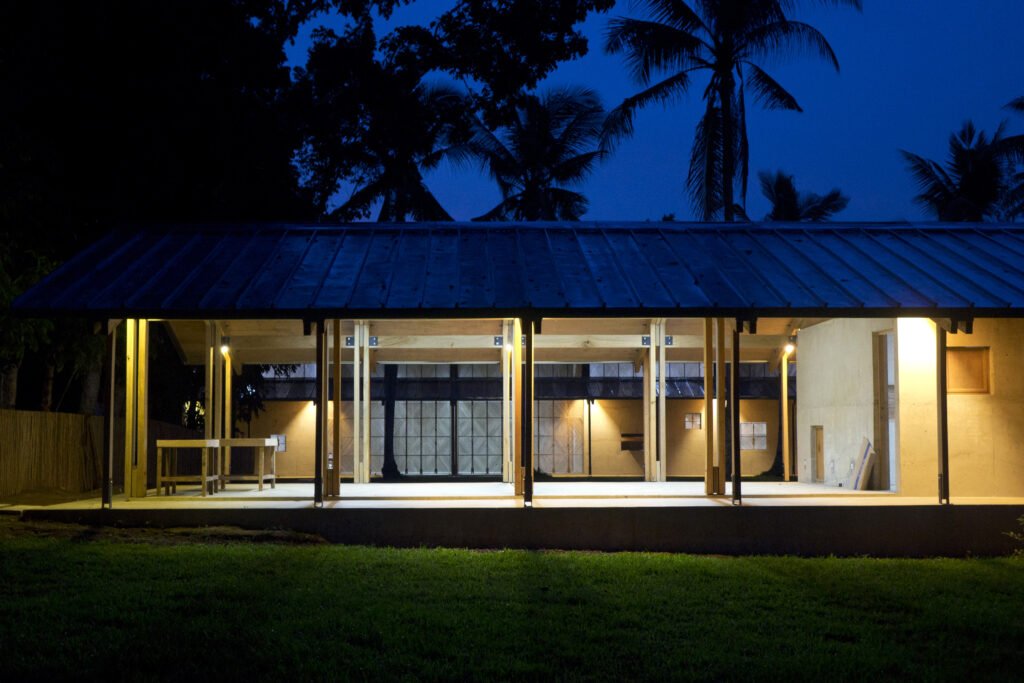

Streetlight Tagpuro
A couple of years ago, we did this little project for Tacloban for a foundation to build an orphanage and study center in Leyte. It’s something we’re incredibly proud of because, weirdly, something completely unexpected, we ended up winning one of the three main awards at the World Architecture Festival in 2017. So, we were the first Filipino firm actually to have won one of the major awards. And this is a project that we remain supremely proud of.


Here’s the location, Leyte, following Typhoon Haiyan or Typhoon Yolanda, and the absolute devastation that happened. The project involved doing a community center for a place that actually had existed before. There was previously a community center there, but just completely wiped out by the storm. Very true to the spirit of what this is all about.
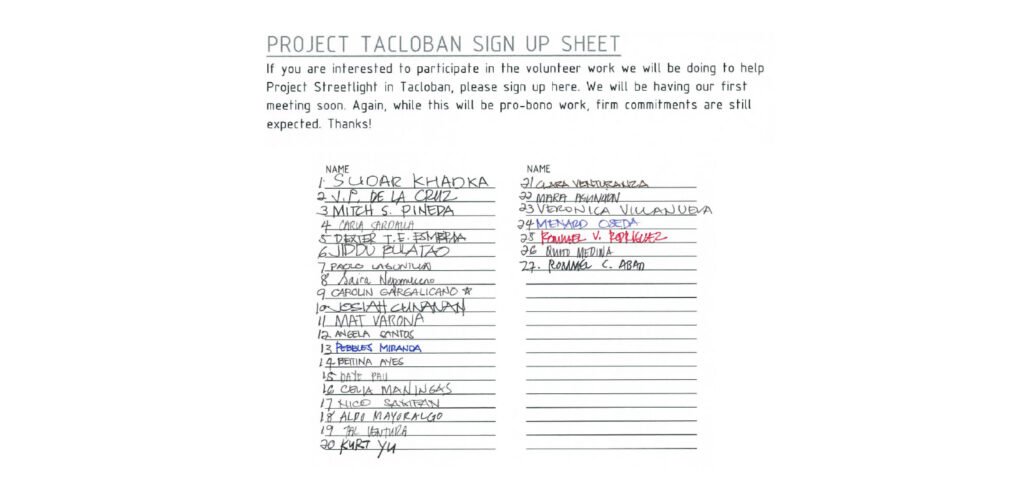

You can see this is the original signup sheet for those who wanted to work on this completely pro bono project. And what you’re looking at there is basically half the firm. Half the firm wanted to be involved in this project. I think it says something about the values of the firm and what it wants to do, what it wants to accomplish, what it cares about.


We went through the seven-step process again—digest the project, what’s the big idea, what are the project’s ambitions? We do this little anthropological exercise in discussion within the firm and then we diagram our thoughts about the project.
And we felt, obviously, at the end of the day, it’s about the community, notwithstanding the values and skills we bring as architects. You have the architects on one side, creating a responsive framework to the community that’s going to use it, creating the meaning, okay, and the community has total input into what that framework can be.


And in keeping with that, we dragged in the community to participate in the design process! Sudar was the lead architect on this project. He ran with the ball together with our staff. They went down to Tacloban with Alex Furunes, a Norwegian architect and close friend of the firm who dragged us into this project. He was the original architect of the first community center that got wiped out. And so, we dragged the community into this. In effect, we transformed that community into architects themselves—not just the heads of the family, but also the women in the family and the children who got involved in the design.
This is one of these things we are supremely proud of. Here’s the framework, the possible design that we were talking to them about. They took this, digested it, changed it around, flipped things around. We asked them what they thought the meaning of a window was, what’s the meaning of a door—these complicated questions that force them to think about things. You see them actually building the initial model down there with popsicle sticks, the tools at hand, right? Doing mockups, the kids got wholly involved in the design of this community center.


You see our architects up there in the upper right, asking them what they thought about one thing or the other. And then the manangs with the big matrix of what’s important to them what they wanted to achieve. And then we’d take that back to the office, and it’s back and forth, back and forth with the team.
We had the Norwegians, the European guys there, I think three or four of them from the foundation, and Alex, living in the office, basically, for two years. We had a little corner in our drafting room to work on this project, building the scheme, building models and mockups of what they thought the community thought windows meant. And looking at the options, making the structure itself. And the final product.


Very simple, buildable, scalable, and the fishing community became a community of competent construction workers. All of a sudden, they had skills of how to put things together. This is opening day. A lot of happy faces, a lot of really satisfied, fulfilled folks. Children. And weirdly, it won (World Architecture Festival’s) Small Project of the Year. At the end of the day, architecture is about people.






2016 Architecture Biennale
One last little project. The 2016 Biennale in Venice. We were chosen to do the first Philippine pavilion. We thought deeply about what we wanted to say. We were concerned at the time with these issues of our history being lost. You see here, the old Mandarin Oriental. And eventually, it was taken down, much to our dismay and chagrin, not a whole lot we could do about it. We had to be big boys when the National Commission on Culture and the Arts said it could be taken down. And the sad moment of the Mandarin being completely flattened.


It’s not the first; it’s happened to work of the firm over the years. The old Benguet building that we thought was one of the best buildings the firm had ever done. And just like that, in the blink of an eye, we woke up one day, and there was a hole in the ground.
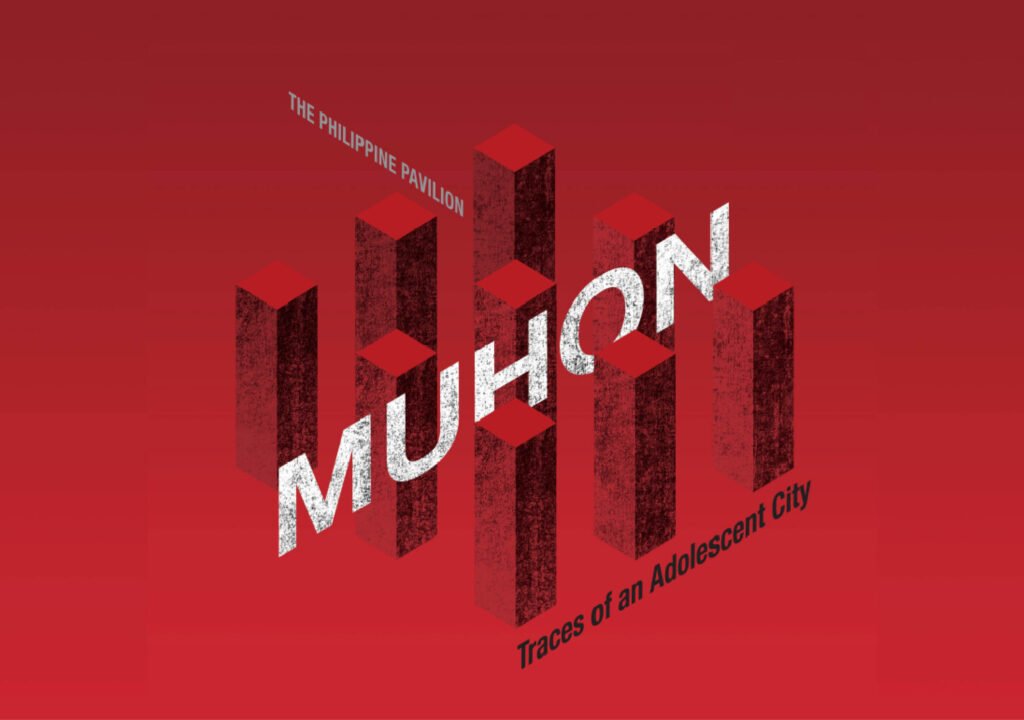



We ended up making this proposal called Muhon. What is a muhon? Muhon as these markers that talk about a place and property and memory and rights. We concluded that these issues of history and identity were issues that were much, much larger than ourselves. It’s not just a Locsin issue. It’s about all of us as architects, builders, people, an entire culture.
A muhon is a primitive act of affirming our existence somehow. And how we understand heritage, rights, etc.
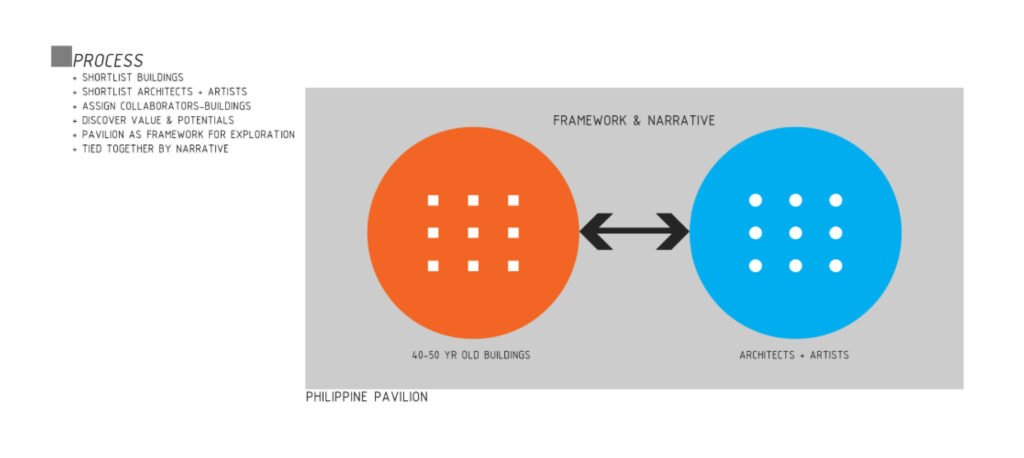

Here we go with those diagrams again. But they’re powerful. We said, this is not about ourselves; this is about everybody else. So, let’s not make it about ourselves. Let’s invite our competitors, our colleagues, people who care about similar things about design. We asked nine architects and artists, and excluded ourselves from that, to create these monuments, these muhons, to take endangered buildings or spaces and interpret them.
Again, if you remember the diagram, trusting people to bring their own interpretations into what those buildings mean. And these were the nine folks worked with: up there with the Mañosas and Ed Calma, second-generation firms like us that had a heritage.
And then we had mature firms doing really, really good work now, C|S Architecture, Ana Sy and company and Jorge Yulo.
And then the young whippersnapper firms doing fantastic, tremendous solid work—the 8×8 Design Group and Don Lino from Lima. And then three visual artists, Tad Ermitanyo, Poklong Anading, and Mark Salvatus, who had a robust social sense of interpreting our condition.




So those were the nine folks. They chose among themselves from a list of endangered buildings and spaces. We said we’re not going to tell you which to choose. You pick the buildings and interpret these buildings, in their original state, in their current state of modernity, what it is now, and then what they could be in the future. Bring your own self, your own version of what you think this building means to you, and what you see as its significance. Abstract it, reduce it to its essence, create a representation of those things, and do these three muhons.


The venue was these three rooms at the Palazzo Mora in Venice, the first Philippine pavilion. You see the dotted line on the bottom right, Palazzo Mora historical. And we had discussions with advisors Paulo Alcazaren, Patrick Flores, the late Toti Villalon, may he rest in peace, Marian Pastor Roces, Dominic Galicia, and Tobias Guggenheimer—all these guys to advise us whether we were going down a line that made sense. Extremely collaborative. Here you see the nine architects and artists in one of these sessions, a little mockup in the bottom left, of what these muhons might feel like in a space in a room. There’s Ed, with his glasses up on his head, looking at what these things might feel like.


Then in our office, designing the venue, designing the space, it was an all-office effort, a crazy thing to do in the middle of all the work we were doing; we pulled in everybody to give their two cents.
And this is the basic scheme. Big Idea: three rooms, one very dark, one medium-light, then one blank and white, very bright, representing the three states of these buildings and spaces—its history, its modernity, and a conjecture of what it could be.




The layout of the nine muhons. Floor layouts. And these were the schemes that were chosen: the Mandarin, Chinatown, Binondo, PICC, Makati Stock Exchange, Luneta, Coconut Palace, Pasig River, Pandacan Bridge, and Ramon Magsaysay Building. We were flattered that there were three buildings that our firm did that were chosen.


That’s the entrance to the Room of Memory, what it felt like, that dark room of markers. And the grid, basically, the Daniel Burnham grid of Manila.
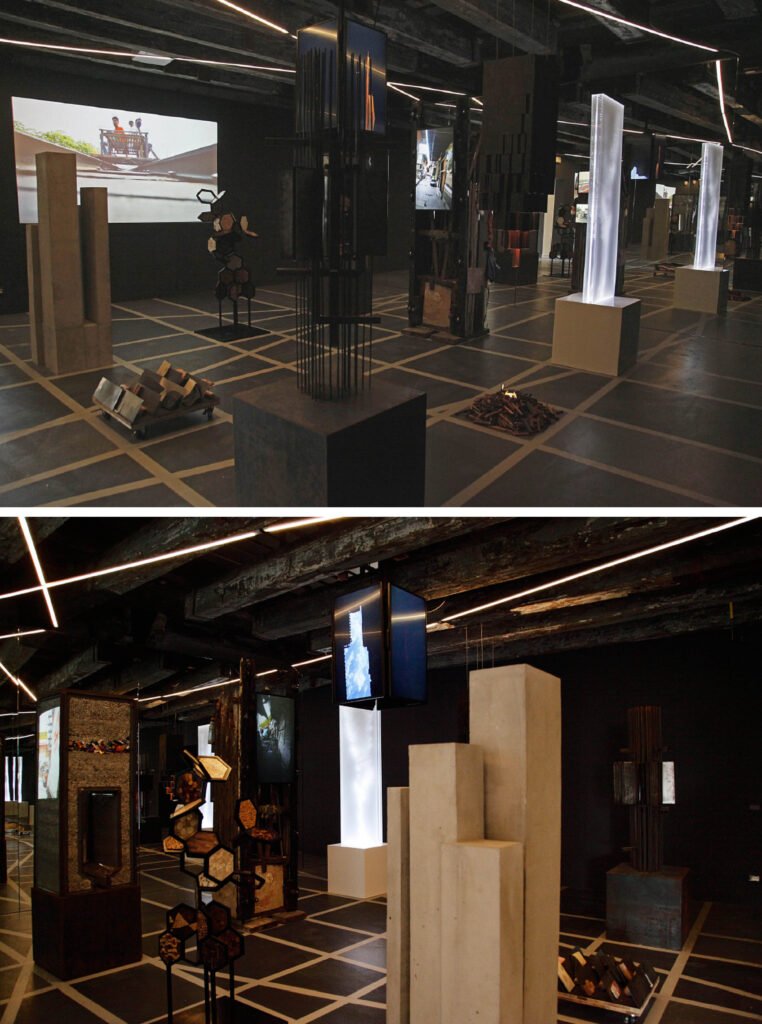

The second room, the medium room, with the grid denied and a bit of the chaos that we all live amid today.
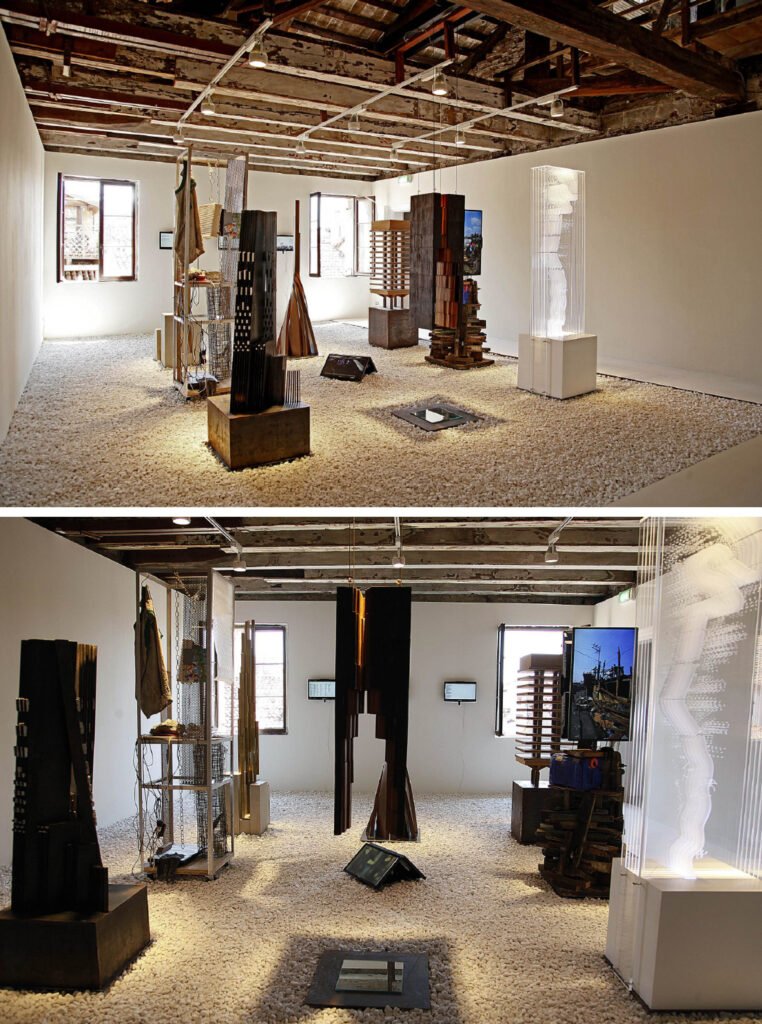

And then the Room of Conjecture, where it’s blank. If there were no conditions put on the spaces, what could these buildings be?


And the team that put it together, the nine groups, only Ed was missing here; he could not make it to Venice because he’s a busy guy.


Conclusion
There’s a progression and shared DNA from the past in the present firm with those same values intact. The big idea, the process, the thinking behind it, in a very different time.


Going back, there’s my father in the middle with his partners through Ruben Protacio on the left, Orly Mateo and Tito Saguirre, no longer the firm. But the two guys, Raul and Ed, are still with us today.


This is right before the pandemic, talking about a project. The gentleman in the white in the middle is Raul, and Ed Ledesma, our managing partner, who runs the firm today.
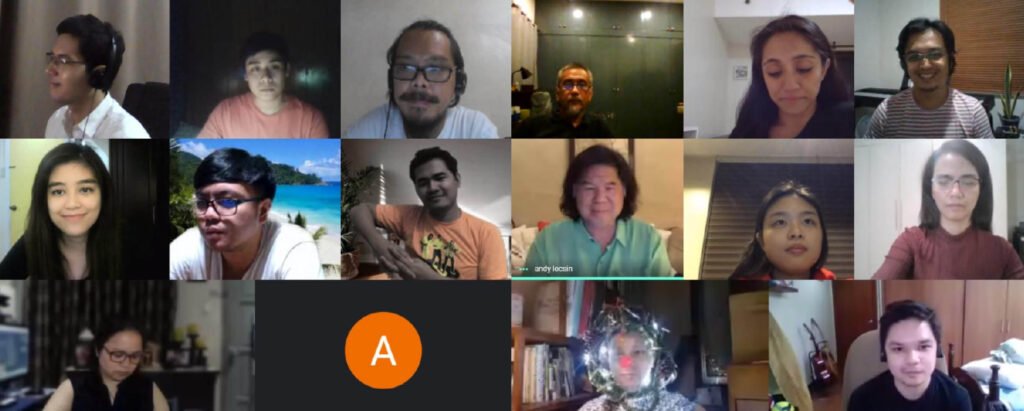

So we’re still doing what we’re doing, but in a very different way with a whole set of very different considerations and different situations, more so today with the pandemic, in which so many things are done online. And we have technology to thank for being able to do this. People have adapted very easily because we embraced technology very early on.


Let’s go back. You remember that statement, “A work of architecture becomes iconic only when society finds that it resonates on many levels; when it captures a spirit and an idea that is relevant to and valued by those who view it, inhabit it, and use it over time.
A tweak on that, a refinement—it’s all about meaning. Meaning is found not only in what you do, but in how you do it, who you do it with, and, hopefully, in collaboration with people with synergy and chemistry; and eventually, how that design is shared with the public.
Values that carry over two generations at least. Architecture is, and always will be, about people.


And whether it starts out as this iconic thing, at the end of the day, is there relevance? Yes, there is, if people continue to use it and value it.


Or whether it exists simply in the mind’s eye of a person, somehow there’s value to it.


And when an entire community actually becomes the project. It’s about helping people get through difficult situations. And it’s never been more appropriate as today in this pandemic.
It’s about generosity, about sharing everything you have. There’s no palyahan, no trying to corner every project. There’s enough for everyone. And be generous with your idea, technology, and design thinking. Share it because it raises the bar for everybody else.
It’s about community. It’s about faith, personal faith. Whether you’re agnostic, Catholic, or Muslim, it doesn’t matter. It’s about community. It’s about the society you live in. A little bit corny, but it’s absolutely true. At the end of the day, the big idea is that it’s all about us, and we’re all in this together.
So be generous, share, be a community, help each other. It continues to this day.
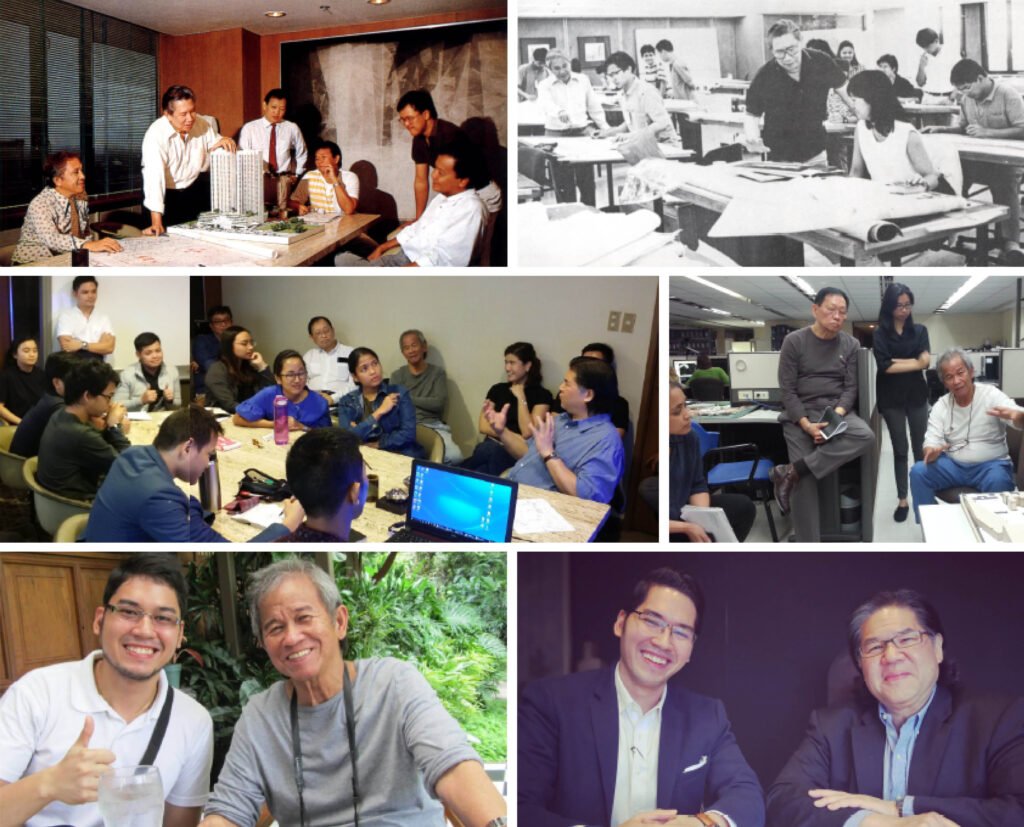



And as the last slide, sort of weird proof of all of this. This is the firm as it exists today in the pandemic and just before the pandemic, succession. It’s a continuum. And that little image on the left, believe it or not, is a book coming out that we didn’t do.
Some Swiss architect in the mid-teens visited Manila, became incredibly fascinated with the firm’s work, my dad’s work, went back to Switzerland, and did a PhD. And it became an oeuvre complet. He did a thesis; it’s been turned into a book of the complete works of my dad. I think it’s going to be launched in November this year in Switzerland. We had almost nothing to do with the book, of which we are incredibly thankful. So many of us are so allergic to PR. We’re all about the substance of the work and doing it without fanfare, just doing it as well as we can. We’re not great marketers–it’s the last thing on the list. And we’re grateful simply that somehow the old work continues to have meaning even for people who view it for the first time. Somehow, it retains its power and its relevance to somebody from the outside. So, look out for this. It should be on the shelves maybe at the end of the year and certainly at the beginning of next year. So, with that, thanks very much. Take it away, folks. •




9 Responses